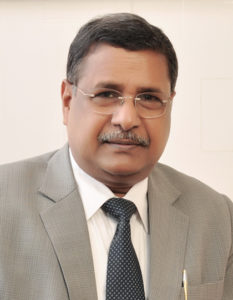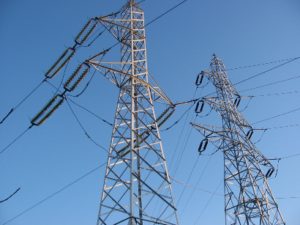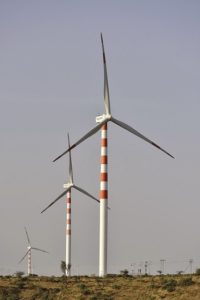Adequate and reliable transmission is a key enabler for the power market: IEX
- August 15, 2017

Indian Energy Exchange Ltd (IEX) is india’s premier power trading platform, providing an automated platform for physical delivery of electricity. In this detailed interview, S. N. Goel gives deep insights into how IEX has grown since it began operations in 2008. Thanks to rapidly growing interregional power transfer capacity, Goel explains how India is slowly moving to reality of “One Nation-One Grid One Price.” Several new trading contracts are in the offing for launch on IEX, discusses Goel in this interaction with Venugopal Pillai.
Tell us about the participation base at IEX.
We have achieved a deep penetration in respect of participation on our exchange platform. As of 31 March 2017, we had 5,800 participants registered with us. Over 4,200 registered participants are eligible to trade in electricity and remaining in Renewable Energy Certificates (REC) market. Our participants are located in 29 states and 5 Union Territories and include 50 distribution companies, over 400 electricity generators and 3,800 open access consumers.
Our vast and diversified base of open access consumers represents industries such as textiles, metals, chemicals, automobiles, food processing, cement, ceramics and plastics. Besides, housing and commercial real estate, consumer goods, information technologies, are also represented on our platform.
How the trade volume has grown since the launch in 2008?
In year 2008, when IEX was incepted—we were the first exchange to be set up between the two power exchanges that are operational today—the country was then in power deficit situation. We commenced operations with trading in electricity – the Day-ahead Market (DAM) was set up in June 2008 and later in year 2009 the Term-Ahead Market (TAM) was started. Over the last nine years, our electricity market has grown to become the most vibrant and dynamic market segment. We traded a total volume of 6.2 BU (billion units; 1 unit = 1 kwh) in electricity market in FY10 (financial year ending March 31, 2010) and about 40.5 BU in FY17 representing a compounded annual growth rate of 31 per cent over the last eight years.
Today, almost all the distribution companies are leveraging the electricity market on our platform to manage their power demand and supply requirements in the most effective and efficient way. With significant augmentation in inter-state transmission capacity over the last two years, which led to reduction in congestion and enabled competitive price discovery, we expect the distribution companies to continue trading proactively on our platform going forward.
The Renewable Energy Certificate (REC) is the other operational market segment on our exchange. In this segment, we traded 19.9 lakh RECs in FY13 to 46.2 lakh RECs in the FY17 representing CAGR of 23 per cent over the five years.
What percentage of electricity generated in the country is traded on electricity exchanges (IEX and others, combined)? Do you see this metric improving in the coming years? What factors will drive this increase?
According to the CERC statistics, during FY17, the total generation in the country was 1,160 BU. The short-term market constituted around 10.3 per cent (or 120 BU) while the exchanges constitute 3.54 per cent (or 41.1 BU) of the total generation.
Significant enhancement in generation capacity especially in the last five years, and robust interstate transmission system, have indeed enabled good growth in the power market. Besides the robust generation and transmission being available, we believe our strengths such as: efficient price discovery, transparency, competitiveness, diverse participant’s base providing liquidity in market contracts, flexibility, and robust technology, will continue to be key factors in driving our future growth and success.
Going forward, we do see increase in the volumes traded through the power exchanges. IEX recently engaged CRISIL to prepare a study report on “Short-term Power Market in India”. According to the projections made by CRISIL in this report, the annual volume on the power exchanges is likely to triple, say about 125 BU, in the next five years.
We note with appreciation that IEX has been witnessing “One Nation, One Grid, One Price” on several occasions in the recent past. Tell us more.

Yes, in June 2017, the day-ahead market on our platform realized “One Nation, One Grid, and One Price” on 27 days during the month and 10 days in July 17.We indeed owe the ‘One Nation One Grid One Price’ to the significant addition interstate transmission capacity in the recent past. Adequate and reliable transmission is a key enabler for the power market.
As on date, the country’s interregional transfer capability is 12,750 mw for northern import and 7050 mw for southern import. Just five years back, it was 4,000 mw and 1950 MW respectively. Evidently, there has been substantial increase in transmission capacity especially towards southern states in the last five years.
Earlier, the exchange market used to frequently witness transmission congestion leading to market splitting and multiple prices on account of that. The whole country used to split in six to seven multiple price areas. With transmission capacity augmentation over the last two years, the instances of market splitting and multiple pricing and have reduced considerably. The market prices have not only converged but have also come down significantly, especially in the case of southern states. For instance, in FY17, average clearing prices (ACP) for South, and Rest of India were at Rs.2.79 per unit (kwh), and Rs. 2.29 per unit, respectively, whereas in FY13, the prices had varied widely and was Rs.6.86 per unit for South, and Rs.3.07 per unit for Rest of India.
With the government committed to further reinforce and augment the power transmission system, several transmission lines are expected to be commissioned in the next one to two years. We will then have a virtually congestion-free power market and “One Nation, One Grid, One Price” will eventually become the norm rather than an exception.
There is a feeling that power producers have tied up their output through long-term power purchase agreements with power discoms, leaving little surplus for trading on exchanges. What is your view?
According to CERC, the Indian power market in terms of electricity generated consisted of 89.6 per cent of long and medium term electricity contracts (contracts for periods of one year up to 25 years) and 10.4 per cent for short term electricity market (contracts for period of under one year) for the financial year 2016.
Earlier, say in 2003, all transactions in power sector were through only long-term contracts, which represented power purchase agreements. The short-term market came into existence only after enactment of Electricity Act 2003 and has developed gradually over the last 14 years. Our country witnessed exponential increase in generation capacity over the last five years. As of March 2017, our installed generation capacity was 327 GW whilst our peak demand was only 157 GW. Further, more than 35 GW of this installed capacity does not have long-term contracts and are selling power in short term market. With 50 GW of conventional power capacity addition underway in 13th Plan period and more than 100 GW of renewable capacity addition planned, we expect surplus power scenario to continue for the next seven to eight years.
In specific context of sell-side volumes on our platform, we have seen consistent increase in the sell bids over the last five years. In FY17, average daily sell bids were 8,806 mw, while cleared volume was 4,541 mw. High liquidity on the sell side indeed ensured efficient price discovery; our average MCP (market clearing price) was Rs 2.41 per unit in FY17, There was also significant increase in participation from the distribution companies who leverage our platform to meet all their short-term demand and supply requirements.
The competitive price discovery coupled with flexibility in power procurement greatly enables the distribution companies to manage their power demand and supply dynamics in the most efficient way. Further, the exchange platform holds a great potential and opportunity for the distribution companies to optimise their power procurement cost through by buying power smartly. The discoms could continuously benchmark their variable cost with the price discovered on the exchange and procure through exchange whenever prices there are more competitive vis-a-vis the variable cost of generation of their own generating units.
Tell us about the role of “Open Access” consumers in the total trading volume on IEX.
The Open access consumers represent an important buyer segment on our Exchange. As mentioned earlier, we had 3,800 open access consumers as on March 31, 2017, representing a very diverse segment of industry and commerce and spread across the whole country.
These consumers leverage our platform to take advantage of competitive price discovery. In FY17, the average price of electricity as discovered on our DAM was Rs.2.41 per unit. Our competitive prices help open access consumers reduce their cost of power procurement thereby enhancing their overall competitiveness even after paying high open access charges such as the cross-subsidy surcharge, the additional surcharge etc.
Further, with augmentation in interstate transmission capacity over the last two years and reduced congestion in the southern region, the participation of open access consumer from southern region has increased considerably in the recent past.
What about renewable energy certificates? Has there been a pickup in trading volumes (especially solar RECs)? Do you feel that power utilities continue to dither on their renewable purchase obligation (RPO)?

The Renewable Energy Certificate (REC) Market was operationalised in the year 2011, and it still continuous to be at a nascent stage.
The REC framework was introduced to address the mismatch between availability of renewable sources and requirement of obligated entities to meet their Renewable Purchase Obligations (RPO), by purchasing green attributes of renewable energy located elsewhere, in form of certificates.
As of June 2017, nearly 1,095 renewable energy projects with capacity to the tune of 4,331 mw were registered under REC framework. Wind and solar photovoltaic constitute 53 per cent and 17 per cent of the total registered capacity, respectively, while the balance is under small hydropower, biomass, bio fuel cogeneration. Therefore, the solar REC market is much smaller in size than the non-solar REC market.
In terms of the trading, the market is yet to realize its full potential as most of the obligated entities are not complying with their RPO requirement.
In FY17, a total of 64.9 lakh RECs were traded on both the power exchanges against the total inventory of 247.9 lakh RECs, while in FY13, the total trade on both exchanges was 25.9 lakh RECs against inventory of 43.7 lakh RECs representing a CAGR of 26 per cent in the last five years.
RPO is positioned as the major driving force to promote the renewable energy sector. RPOs, put simply, is the minimum percentage of total power that distribution companies and other obligatory entities like captive and open access consumers need to purchase from renewable energy sources. The market demand supply dynamics and the large unsold inventory, clearly indicates that the obligatory entities have been dithering in their RPO compliance.
What is the current status with respect to the proposed trading in energy saving certificates on IEX?
The CERC issued the ESCerts Regulations in May 2016. IEX has already received consent of CERC for amendments in Business Rules, Rules and Byelaws to facilitate trading of the Energy Efficient Certificates (ESCerts). Presently the Registry (National Load Despatch Centre) is in the process of registering the eligible entities/designated consumers, and trading is expected to commence after the completion of registration.
Please summarize your growth plans for IEX, for the next say 3-5 years.
In the next three to five years, our endeavor would be to further expand and diversify our participant base, create greater liquidity in the existing market segments by augmenting procurement both by the open access consumers as well smart/efficient power procurement by the distribution companies, competitive price discovery and lastly introduce new products to meet the varying needs of the market as well as of our participants. ESCerts will be one new market segment expected to commence trading shortly, as discussed earlier.
Besides, we also aim to offer bunch of other new products and market segments in the near future. With Government of India placing enhanced focus on renewable energy, we expect renewable energy trade to become more active on our platform. We intend to leverage the guidelines issued by the government in December 2016, to enable cross-border trade of electricity contracts with neighboring South Asian countries such as Nepal, Bangladesh and Bhutan.
Similarly, we aspire to introduce the forward and future market to launch long duration contracts in electricity as well as provide option to generators and distribution companies and help them safeguard themselves from price risks. Further, ancillary services, capacity market, financial transmission rights are some of other potential market segments which can be introduced as the market evolves and matures.


